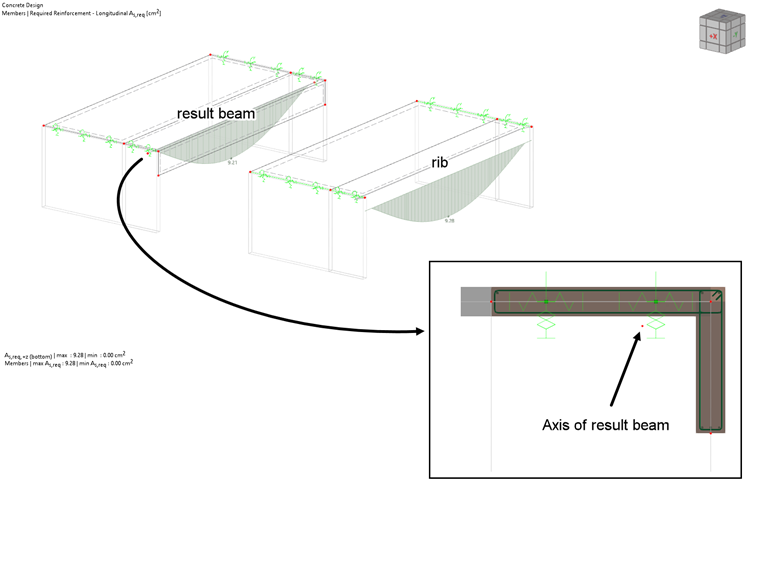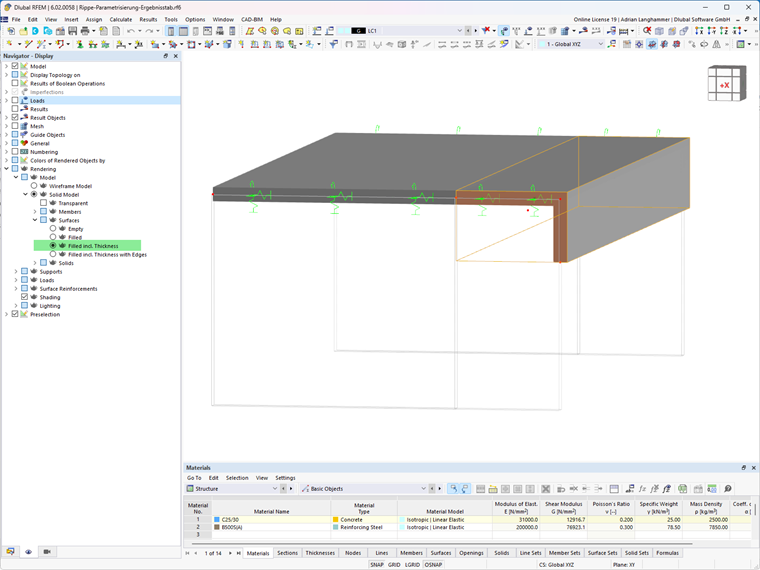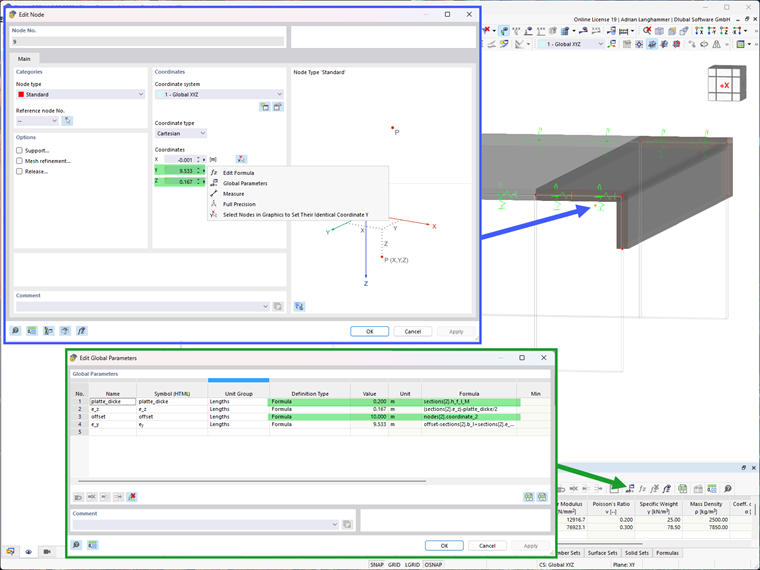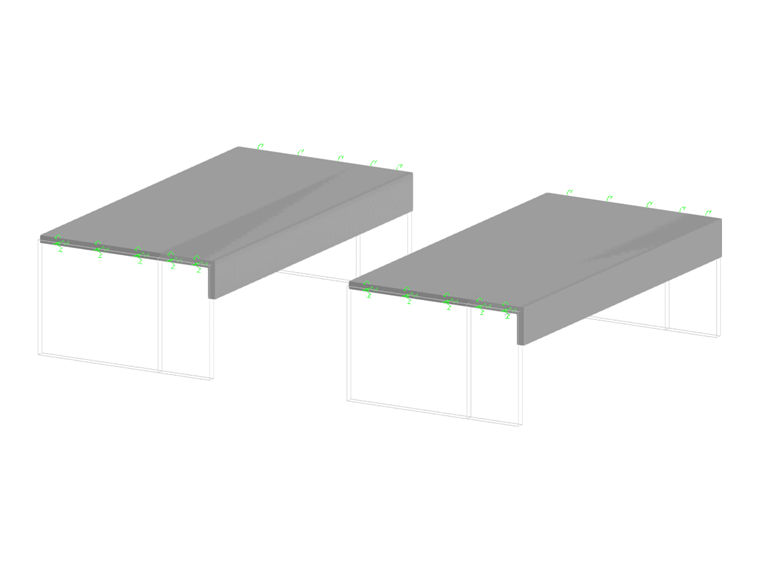With a result beam it is possible, for example, to integrate surface forces and moments along the member axis within a defined area and to design them subsequently.
Design
These internal forces and the cross‑section assigned to the result beam are used for the design. It is very important to run the result beam axis through the centroid of the regarded cross-section, since the internal forces under consideration of the respective lever arm are to be integrated.
Graphical Check
You can use the rendered view to graphically check whether the result beam is correctly arranged. In this context, the surfaces must be represented including their thickness. The edges of the result beam's cross-section must match the edges of the surfaces displayed.
Parametrization
Here, the parametrization is only an extended option for input. It is, of course, not necessary when using the result table.
However, if, for example, the cross-section of the T-beam needs to vary frequently during the modeling of a downstand beam, the location of the result beam axis can be parameterized. If you define the position of the axis depending on the cross-section parameters of the result beam, you only need to change the cross-section. The axis of the result beam is then aligned automatically.




